Instructions for transplanting peonies to bloom
In order for the newly transplanted bush to bloom, you need to plant it correctly. To begin with, they choose a place where the peony will be grown. This should be a well-lit, dry, draft-free area. It is good if the sun hits it in the first half of the day, and in the midday heat the bush will be in partial shade. This will extend the flowering period. The eastern side of the site is best suited.
Important! Peonies are planted away from trees or shrubs, as they obscure the plant with their shadow. The full development of the bush will be disrupted, flowering is out of the question
Peonies grow well only in loose, loamy soil. They grow poorly in heavy soil. The planting depth depends on the soil on the site. If the soil is heavy, then the cuttings are deepened only by 3 - 5 cm. On light soils, the planting depth is increased to 7 cm. With a deeper planting, the peonies will not bloom.
When transplanting peonies, you need to properly plan the flower bed. The distance between the bushes for low-growing varieties is about 80 cm, for others up to 110 cm.Tree peonies are planted at a distance of 1.5 m.
Soil preparation
In order for the peonies to start well in a new place and begin to bloom fully, it is important to choose a suitable area for them to place, as well as to prepare the pit correctly and fill it with fertile soil. The most comfortable for plants will be the eastern section, where they will have enough sun.
If you create conditions that prevent drafts, then the flowers will delight with long and beautiful flowering. You should not plant peonies near tall trees, otherwise they will shade them, not giving the necessary sunlight.
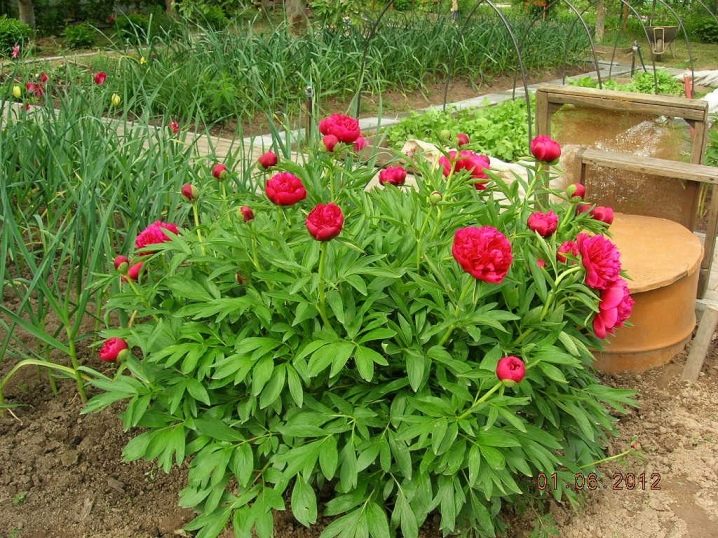
An incorrectly chosen place will be the area where water at least sometimes accumulates, because 1-2 days of stagnation of moisture is enough for root decay. If it is not possible to choose the optimal site for the peonies, you need to provide the bush with a good drainage layer so that excess moisture immediately leaves without lingering at the roots. The soil should have an acidity level in the range of 6-6.8 pH and be loamy.
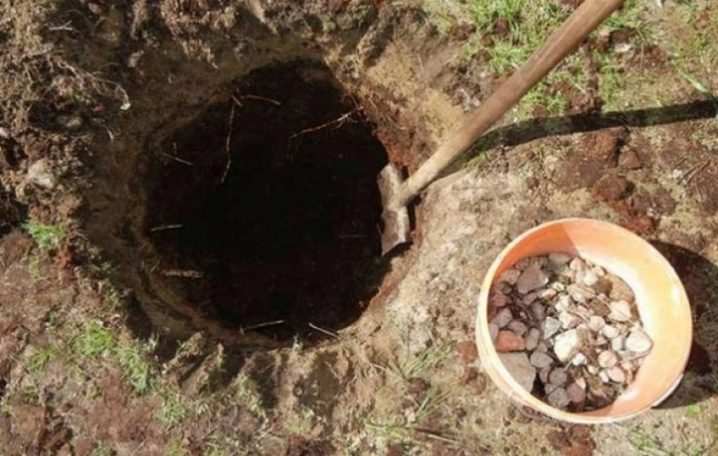
If the soil is compacted, then the peonies stop blooming and develop with difficulty.
In order to prevent such processes, it is important to pre-prepare the soil for transplanting by digging a hole 60-70 cm deep and mixing the optimal soil. Regardless of the type of land and the location of the groundwater, the presence of drainage only benefits flowers
If the soil is heavy, then it must be diluted with coarse river sand and plenty of fertilizer. In the case of sandy loam soil, clay will serve as an additional component.
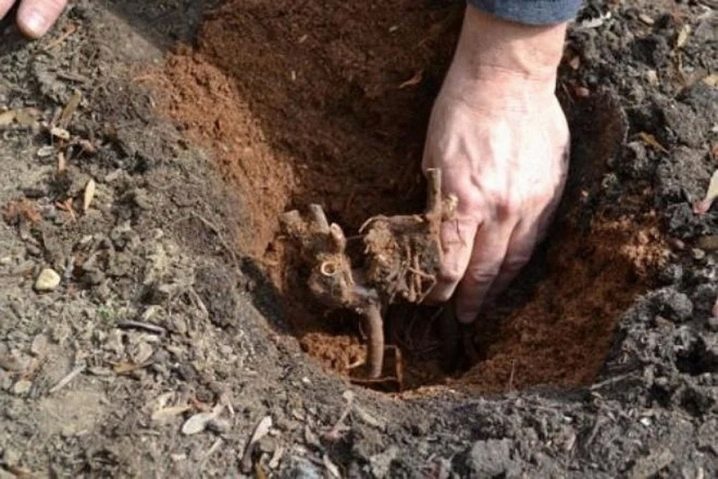
For transplanting, it is important to ensure high soil fertility and its loose structure so that it is easy for the roots to break through in new conditions. Peonies should not be planted too deep, because they are very sensitive to soil aeration and will not be able to grow normally due to its absence.
If it is possible to achieve optimal conditions, then after changing the location, the peonies will be able to actively develop. Such flowers will reach their maximum development in 4-5 years, delighting with stable and beautiful flowering for another 5 years.
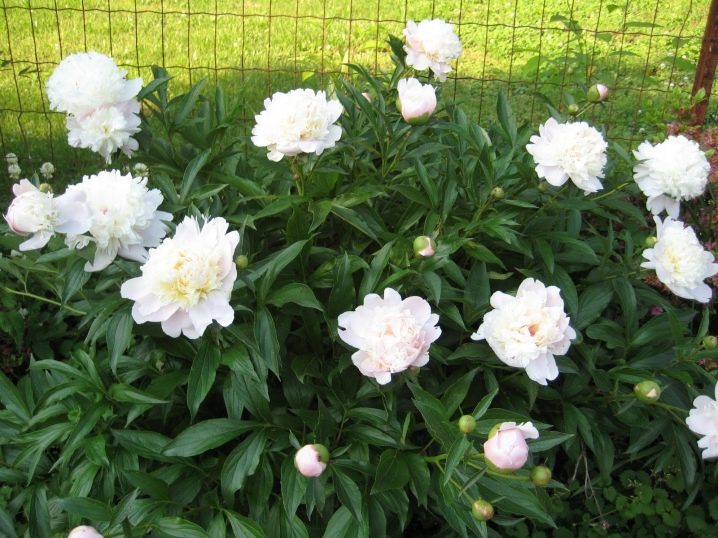
Peony flowers description
Peony is a monotypic representative of the family, numbering about forty species. For the most part, they are herbaceous, but there are also tree-like peonies, which are semi-shrubs or shrubs. Almost all modern varieties have descended from the medicinal peony and the milk-flowered peony. Herbaceous peony is a plant up to one meter high with several stems. The large, powerful root of the peony has cone-shaped thickened processes. The peony has another leaf arrangement. Dark green and sometimes gray leaves are pinnate or trifoliate.Single flowers with a diameter of 15 to 25 cm with five or more petals are white, red, pink, cream and even yellow. The peony fruit is a star-shaped multileaf in which large, dark, shiny peony seeds ripen. The peony blooms in May. Today, breeders are busy creating hybrids of herbaceous peonies with tree-like ones. The tree-like peony reaches a height of 1.5-2 meters, its leaves are bright green, double-feathery, flowers on one bush can be from 30 to 70 at the same time, and each of them reaches a diameter of 20 to 25 cm. The petals of the flowers are corrugated , dense.
There are varieties with a simple, semi-double and double flower shape of raspberry, red, white, lilac and pink color. The tree-like bush blooms for about two weeks, and if the weather is cool, then longer. Treelike peonies in the garden are attracted by the fact that they retain their decorative effect even after flowering due to the unusual shape of leaves and fruits. Most tree peonies are frost-resistant, and if you still have to cover them for the winter with spruce branches, then for two reasons: because of the likelihood of a snowless winter and because of crows pecking out flower buds.
Planting peonies
How to plant peonies
Growing peonies does not require much time or excessive effort from you.
The most important thing is to choose the right site for the peonies, because they will grow on it for many years. The root system in adult plants reaches a depth of 70-90 cm, so transplanting a bush that has reached 4-5 years of age is not an easy task
Peonies prefer to grow in well-lit areas, sunlight for 5-6 hours in the morning is very desirable. But peonies are afraid of drafts, so it would be nice if they were protected by tall bushes or trees.
Do not plant peonies in lowlands: rhizomes can rot from stagnant water.
In the photo: Growing peonies in a flower bed
As for the choice of soil, loam with an acidity of 6-6.6 pH is best suited for peonies. Too clay soil will need to add humus, sand and peat. In sandy - peat, clay and humus. Sand, wood ash and organic matter are added to peat soils.
Planting peonies in autumn
And they plant and transplant peonies in late August - early September. A week before planting the peonies, holes are dug 60x60x60 cm at a distance of 70-100 m from each other, a drainage layer of 20-25 cm from coarse sand, broken brick or crushed stone is necessarily laid on the bottom of the holes. Then a layer of top dressing is poured, consisting of compost, humus, 100 g of lime, 200 g of superphosphate, 100 g of potassium sulfate, 300 g of wood ash - with a layer of 20-30 cm. Then the pits are filled to the top with earth mixed with compost. A week later, by the time the peonies are planted, the soil in the pit will sag, which will make it possible to place the rhizome of the peony in the hole, sprinkle it with garden soil and lightly tamp the soil.
Keep in mind that peonies do not tolerate deep planting: the result will be a dense green bush with no flowers.
If you want to wait for lush flowering peonies, deepen the rhizome so that the upper bud is no deeper than 3-4 cm underground. In addition, in the first year after planting or transplanting, the peonies do not bloom and look lethargic. It so happens that the next year the peonies will not bloom, but this is not scary if the bush looks healthy - it's just that the peony bush has not yet reached maturity.
In the photo: Peony bud
Planting peonies in spring
Actually, peonies are not planted in spring. But it happens that it was in the spring that you got the planting material that you dreamed of ... and what to do? In this case, experts suggest planting peonies in a 2-3-liter pot and keeping them in a cool dark room - a basement or cellar - before planting in the ground, keeping the soil moist. To do this, you need to put snow or pieces of ice on top of the ground, which, having melted, will moisten the soil in the pot.At the end of April or May, the peony is taken out into the garden and buried in the ground directly with the pot, where it will remain until the autumn transplant into a prepared pit, carried out by the transshipment method, that is, together with an earthen lump in which the rhizome was located.
Seasonal subtleties of peony transplant
Spring
Peonies are transplanted before the start of the growing season by transshipment with an earthen lump, in compliance with the following rules:
 |
Prepare a painless spring transplant
|
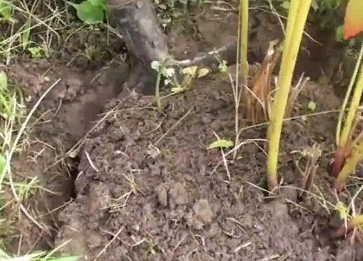 |
Extract
|
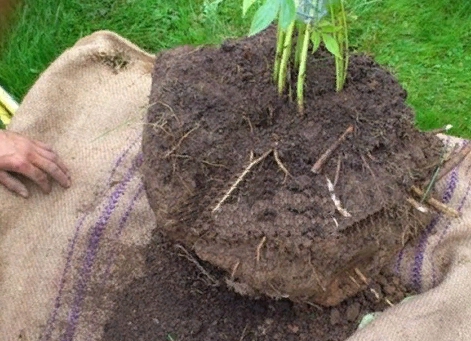 |
Transport from one place to another
|
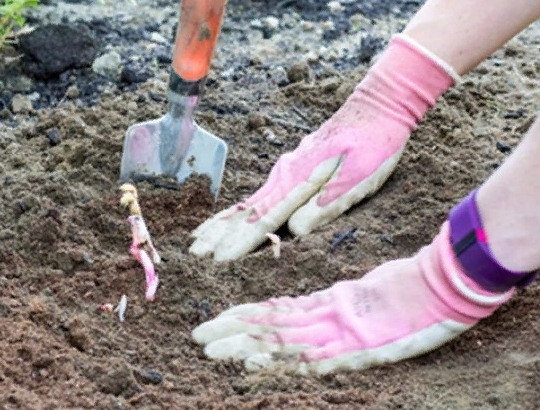 |
Plant
|
How to transplant peonies in the right place in August?
 If you start dividing the root system of a flower, then this will be a plus for him, since the old flower will rejuvenate, and the new one will quickly take root.
If you start dividing the root system of a flower, then this will be a plus for him, since the old flower will rejuvenate, and the new one will quickly take root.
There are several methods for dividing pions, here they are:
- By cuttings;
- Vaccination;
- With the help of seeds;
- Splitting the root;
- Layering;
Each of these methods has its pros and cons, choose for yourself how to plant flowers on your site.
 The easiest way to separate peonies is to divide the root, for this you need to carefully dig out the flower and also carefully divide it with a shovel or ax, the main thing is to make sure that small pink growths remain in the upper part of the root, without them the flower will not begin to grow in a new place.
The easiest way to separate peonies is to divide the root, for this you need to carefully dig out the flower and also carefully divide it with a shovel or ax, the main thing is to make sure that small pink growths remain in the upper part of the root, without them the flower will not begin to grow in a new place.
Your peonies will grow well if you plant them in fertile soil, so add fertilizer, do not plant flowers in soil where there is a lot of clay.
If you plan to plant peonies in black soil, then put some sand and superphosphate in the hole with them.
You also need to monitor the amount of moisture in the soil, peonies do not like a lot of water.
Transplant frequency and need
Peonies grow without problems in one place for 20-30 years, but on one condition - the area where they are planted is well lit, and the soil contains many nutrients that support the annual flowering of the bush.
An unscheduled transplant is required if:
- peonies got sick, rotted, affected by pests;
- due to the overgrowth of trees, they were in the shade;
- ceased to bloom due to depletion of the nutrient content of the soil.
Novice gardeners have questions about when it is better to plant these plants, how to choose a place for planting, how often to water and how to fertilize. To achieve the maximum effect from a perennial on a site, it is enough to have minimal experience, including knowing the timing of transplanting peonies. Subject to all growing conditions, the plant will steadily increase its green mass, form many buds annually.
 Lush bloom in high season
Lush bloom in high season
Preparing peonies for winter
In order to know exactly when to prune peonies for the winter, it is worth remembering that the accumulation of nutrients in the roots occurs even after the shoots begin to dry out. If you cut them off early, the plant will be weakened, so the green mass is cut off before frost. Gardeners prefer pruning in front of the shelter. The more severe the winter time, the more attention is paid to warming and protecting plants, especially if they have just been transplanted. Although the seedlings quickly build up suction roots, manage to take root by the time of a serious cold snap, they are still fragile and sensitive. A high-quality shelter will protect young peonies and help them successfully overwinter.
Autumn preparation of peonies for winter begins with the onset of the first cold weather. Before the weather turns frosty, each bush is cut off, covered with a layer of peat or any other suitable mulch with a thickness of at least a few centimeters. If the soil is prone to acidity, it is better not to use peat.
In regions with cold winters or a small layer of snow in winter, strong winds, the plants are additionally covered with branches or spruce branches. In this case, peonies winter excellently, delight the owners for a long time with their luxurious flowering.
Video about cropping and covering.
Otherwise, there are no difficulties in leaving. Perennials are actively beginning to develop, form buds and charm with luxurious flowers.


